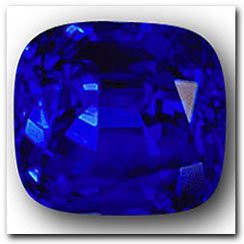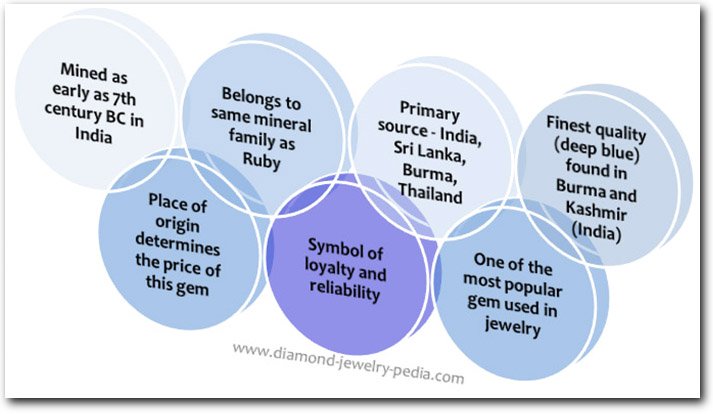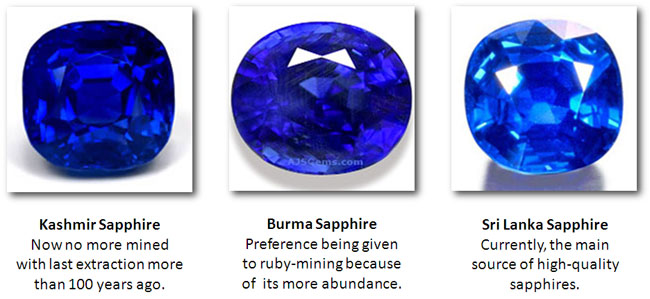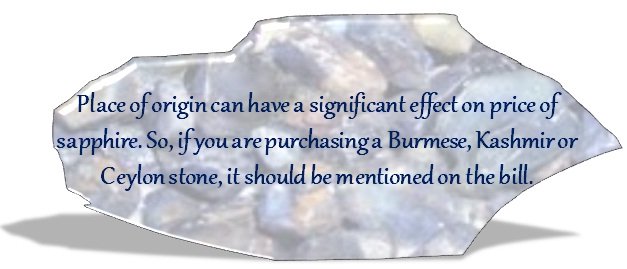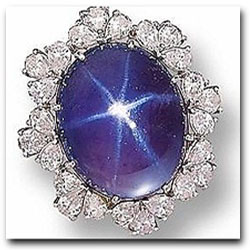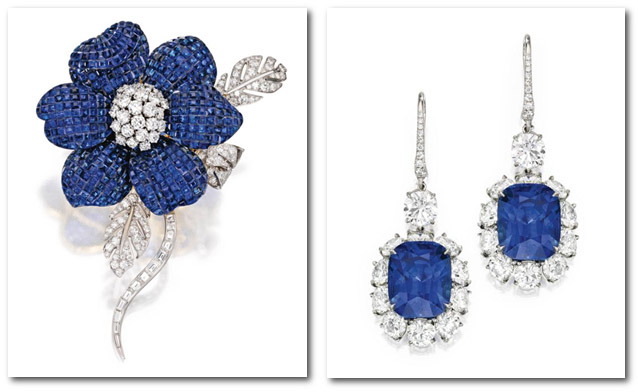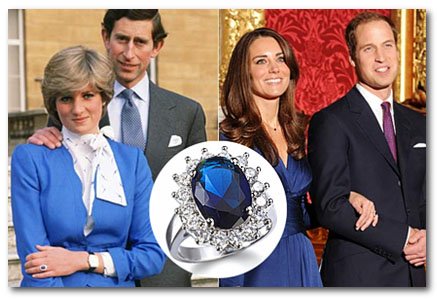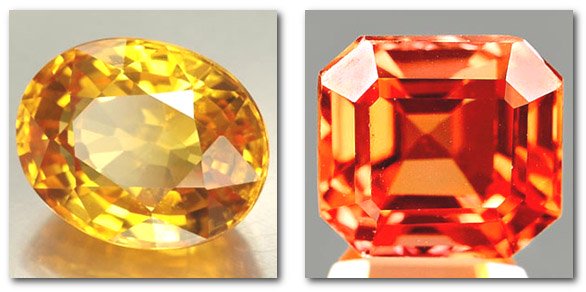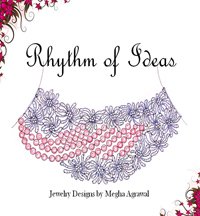Sapphire - The September Stone
The "Celestial" Sapphire - symbol of the heavens, is said to guarantee good health, innocence, truth, and preserver of chastity. It is the birthstone of September and its name is derived from the Latin word "Sapphirus" meaning blue.
Sapphire Meaning and Symbolism
This gem has been known since the ancient times. There was a belief that Earth is set on this gemstone, because of which sky is blue. The ancient Egyptians associated this stone with the 'eye of Horas' (the eye in the sky).
It has been popular since the middle ages and, according to folklore, it was believed to protect loved ones from envy and harm. Favorite among priests and kings, this stone was considered as the symbol of wisdom and purity.
It also symbolizes the qualities required in a healthy
relationship, like loyalty, faithfulness, truth, sincerity, constancy
and reliability. Therefore, it signifies long term relationships, while
representing attributes like - sincerity and faithfulness. You may also
like to read about sapphire engagement rings meaning.
Properties
Chemically, this gem is the hexagonal crystal of aluminum oxide, and one of the varieties of the mineral Corundum that is found in igneous and metamorphic rocks. Corundum is found in every color of rainbow, with red being Ruby and all other hues as Sapphire. But the most prized color of this gemstone is rich, deep blue which is the result of combination of titanium and iron elements.
Being one of the "Big Three" of jewelry gemstones (ruby and emerald being other two), its hardness, brilliance and availability
in so many beautiful colors make it probably the most versatile of the
gem families and an especially good choice for engagement rings.
This stone is rated 9 on the Mohs Scale of Hardness and is second only to the diamond in terms of hardness. So, it is perfectly suited for all jewelry purposes because of its durability and versatility.
Places of Origin
These gemstones were mined as early as the 7th Century BC in India. They are found today in India, Sri Lanka (formerly Ceylon), Myanmar (formerly Burma), Thailand (formerly Siam), Australia, Nigeria, Kenya, Tanzania, China, Brazil, Madagascar, and even the United States (Montana and North Carolina). American varieties occur in a range of colors and are highly sought by collectors.
Different Shades
The finest ones are considered to be of blue variety and are mostly from Burma and Kashmir. Fine, brilliant, deep blue stones from Burma will surely dazzle the eye and as will the Kashmir ones, which is fine velvety-toned deep blue. Sometimes, these stones appear too dark because of poor cutting (cutting deep for additional weight).
The term "Kashmir Sapphire" is used for velvety-violet stones that are not exceedingly transparent. This lack of transparency produces a fine velvety-toned deep blue, unlike that of other blue variants. Kashmir gems that today you may see will be mostly in museums because mines in Kashmir are no more operational with most recent extraction being more than 100 years ago.
Stone found in Sri Lanka offers a very pleasing shade of blue too, but has lesser deep shade than the Burmese or Kashmir variants.
The term "Siamese Sapphire" is used to describe very dark blue stone mined from Thailand. Since they seem to be exceedingly dark, even in daylight, they might appropriately be categorized under blue-black color.
Many Australian varieties are also seen in the market. These are often dark blue, but have a slightly green undertone just like those from Thailand and sell for much less price. They offer a very affordable alternative to Burmese, Kashmir or Ceylon stones.
African stones are found in variety of pastel colors: pale blue, blue violet, red violet, pale yellow, pale orange, steel-gray and dark brownish orange from the Umba gravels. Some African varieties exhibit an alexandrite like color change, especially from the Umba River area where color change is from steel-blue to green or to purple.
Cutting Styles
Brilliant cut and Mixed cut are used for transparent material. However, very dark and/or semi-transparent stones are sometimes cut in cabochon. Pale stones are often cut with heavy backs to deepen the color.
Like ruby, the blue variety of this gemstone may be found in a translucent variety that may show a six-ray star effect when cut into cabochon. These stones are never completely transparent, because they must have enough silky, needle-like inclusions (internal flaws in a stone) to produce a star. This variety is known as Star Sapphire, of which there are numerous synthetics (often referred to in the trade as "linde" [pronounced Lin'dee]).
Star Effect
Jewelry
It is one of the most popular
gemstones in pendants, earrings, engagement rings and all kinds of
jewelry thanks to its vivid color and its versatility. Blue is the most
prominent and popular color of this jewel which goes easily with any
clothing choice or jewelry design. Its deep colors allow one to go with both gold and silver jewelry. Dark blues blend easily with many
colors.
|
Flower in the brooch comes alive with numerous invisibly-set sapphires in petals, with center, leaves and stem livened-up with small white diamonds. |
Beautiful dangling earrings decorated with two cushion-cut sapphires with surround of small white diamonds (with tapered effect highlighting the sapphire). |
Jewelry made of this gem is quite prominent among the British Crown Jewels as well. Prince Charles chose an engagement ring with oval blue Sri Lanka sapphire surrounded by a cluster of 16 diamonds for his fiancee, Princess Diana. History repeated itself again when Prince William gave Kate Middleton the same famous ring with the royal legacy.
Fancy Colors
In addition to its blue color, we are now beginning to see the coming up of many other colored varieties - especially yellow, pink, and purple, and in smaller sizes some beautiful shades of green. These non-blue colored stones are popularly categorized as "fancy".
Yellow ones (usually referred golden) are fairly popular. Compared to the cost of blue varieties and rubies, these stones usually offer excellent value and beauty.
Padparadscha sapphire is a very rare variety that appears pinkish-orange (its authenticity can be verified by presence of both pink and orange color). This variety - originally found in Sri Lanka, but also found in Vietnam and parts of East Africa - depending upon size and quality can exceed the price of the finest blue stones.
Yellow (left) and Padparadscha (right)
Synthetic Sapphire in your smartphone
You may not know that your smartphone also has sapphire in it - although lab-created. Lab-grown sapphire is also called "Sapphire Glass" because of its transparency which is due to absence of impurities commonly found in natural variety. It is made from pure aluminum oxide powder without the presence of color imparting elements like iron, titanium etc.
Its hardness and scratch-proof properties makes it perfect for use in some of the most precious parts of smartphones. Like Apple uses it to encase its camera and Home button's Touch ID fingerprint sensor because of its scratch-free properties. Huawei - the world's 3rd largest smartphone-maker - has launched Ascend P7 with scratch-resistant sapphire screen display.
Raw sapphire glass (left) and finished (right)
Things to Remember
Inevitably, one can find evidence of every technique known to improve the perceived quality and value of this gem . The alteration of color, diffusion treatment (to apply color to the surface only) and synthesis doublets are some of the techniques used.
But, first thing first, be cautious of bargains. Deal with reputable jewelers when considering to purchase. And when considering very fine varieties, especially those from Burma or Kashmir, it’s highly recommended to get the stone tested in laboratory for confirmation of authenticity and whether or not any enhancement techniques have been used.
Finally, I would suggest you to consider following points while purchasing jewelry:
- Concentrate more on quality of the gem and not the size of the gem; this is what really matters the most.
- Confirm its clarity. The general rule is that when you look into the stone with naked eye, there shouldn’t be any inclusions. Stone having inclusions may appear cloudy. Presence of inclusions also indicates that the it may crack or chip.
Return to Diamond Jewelry Homepage
I hope you'll not mind sharing this on Twitter, Facebook and with everyone else :)
Feel free to share if something is in your mind and want it to be covered on this site.
My Newsletter
Did you liked this article? Sign-up my FREE weekly newsletter and I'll send you more awesome new additions on this website along with latest jewelry happenings around the world, and download my Jewelry Design Album for FREE!
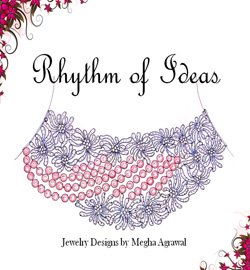 |
|
